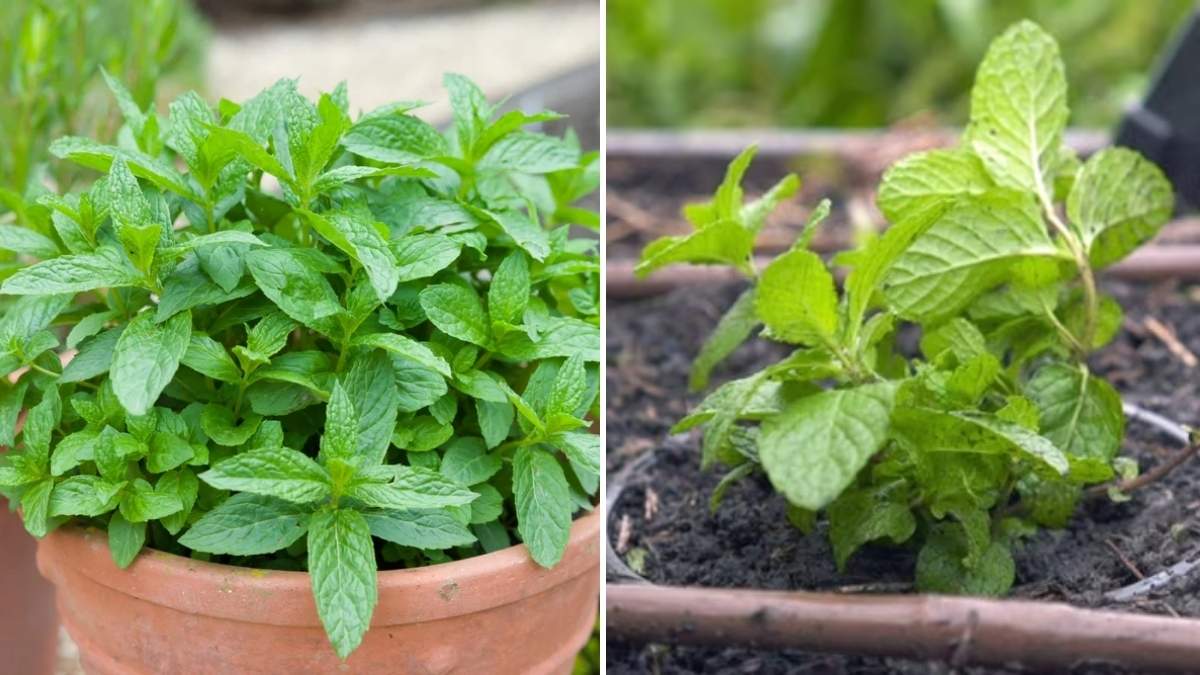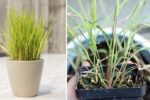Growing mint in pots is one of the easiest ways to bring freshness, aroma, and flavor into your home. Mint is a versatile herb used in teas, drinks, chutneys, and desserts, and having it fresh in your kitchen garden makes a huge difference. The best part is that mint grows quickly, requires minimal care, and thrives in containers perfect for small balconies, windowsills, or patios. With the right setup, you can enjoy an endless supply of this fragrant herb all year round.
Choosing the Right Mint Variety
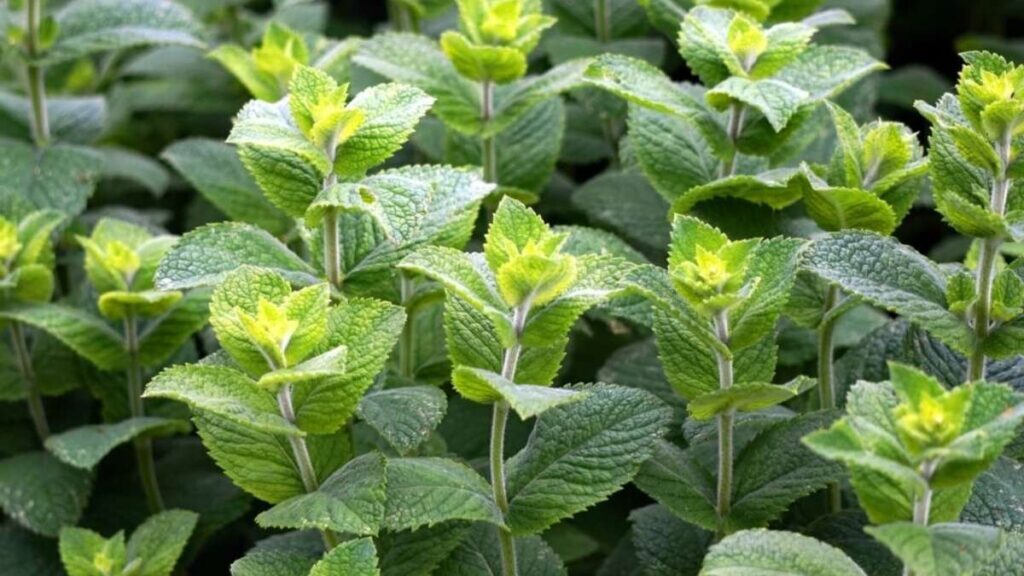
Before you start planting, it’s important to pick the right variety of mint. There are several types available, each with a unique taste and fragrance. Some grow faster, while others are better suited for particular culinary uses. Here are some popular varieties you can try:
- Spearmint – The most common and versatile type. It has a mild, sweet flavor perfect for cooking, teas, and drinks.
- Peppermint – Strong and cooling with a sharp menthol taste. Ideal for desserts, sauces, and herbal teas.
- Chocolate Mint – A special variety with a subtle chocolate aroma, often used in desserts and smoothies.
- Apple Mint – Mildly fruity with a soft texture, great for salads and refreshing summer drinks.
- Lemon Mint – Has a citrusy fragrance that pairs well with fish dishes and lemon-based beverages.
You can experiment with different types, but it’s best to grow each variety in a separate pot. This helps prevent cross-flavoring and keeps each plant’s unique aroma intact.
Choosing the Perfect Pot
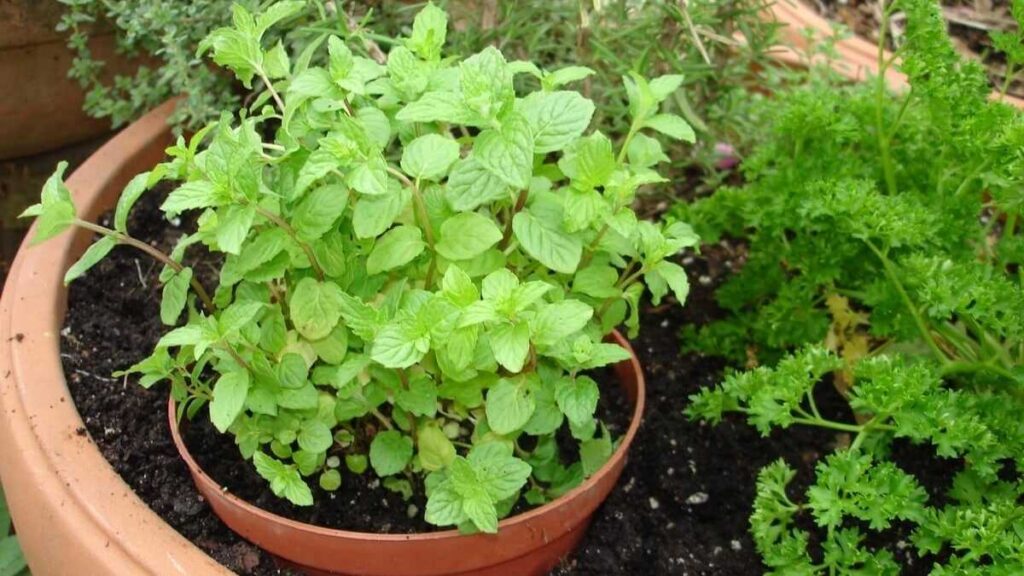
Mint spreads rapidly and can take over a garden if left unchecked. Growing it in pots is the best way to control its growth while keeping it easily accessible. When choosing a pot, consider the following points:
- Use a wide pot (10–12 inches in diameter) to give the roots enough space.
- Ensure the pot has drainage holes at the bottom to prevent waterlogging.
- Terracotta or clay pots are excellent choices since they allow air circulation and absorb excess moisture.
- Avoid plastic containers without drainage, as they can trap water and cause root rot.
- If you’re growing multiple varieties, use separate pots for each.
For indoor growing, lightweight pots are convenient, while outdoor setups benefit from heavier pots that stay stable in wind and rain.
Preparing the Soil
Mint prefers rich, well-draining soil that stays slightly moist but never soggy. The key is to create a soil mix that retains enough moisture without suffocating the roots. Here’s a simple mix that works well for mint in pots:
- 1 part potting soil
- 1 part organic compost
- 1 part coco peat or perlite for better drainage
Avoid using heavy garden soil alone because it tends to compact and restrict root growth. Before planting, fill your pot with the mix, leaving about an inch of space at the top to make watering easier. You can also sprinkle a handful of organic manure or worm compost to boost initial growth.
Planting Mint in Pots
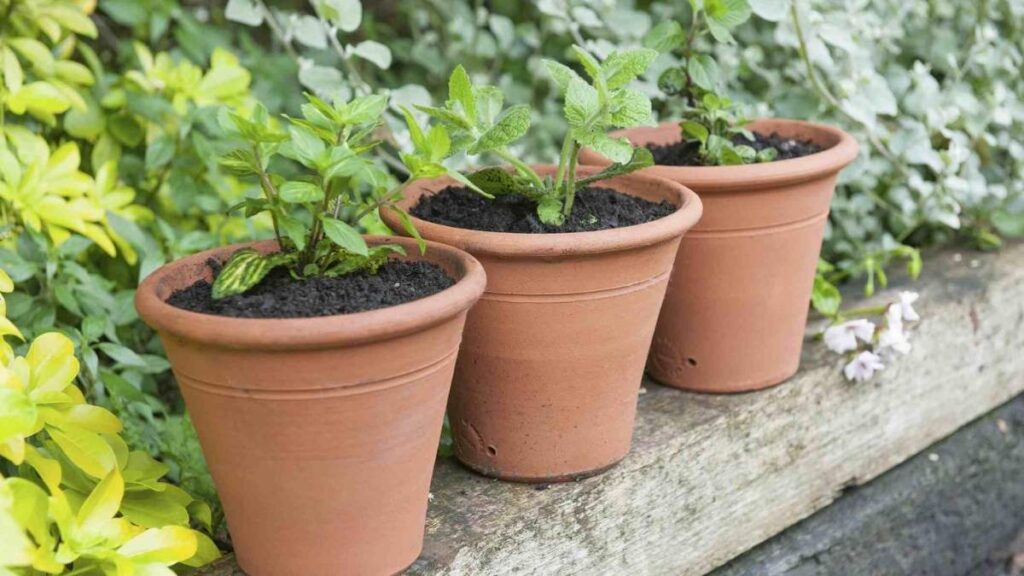
Mint can be started from seeds, cuttings, or small nursery plants, but growing from cuttings is the easiest and fastest method. Here’s how to plant mint successfully:
- Take a 4–6 inch cutting from a healthy mint plant.
- Remove the lower leaves, keeping only the top few.
- Place the cutting in a glass of water and keep it in a bright spot (away from direct sunlight).
- Within 5–7 days, you’ll see roots developing from the stem nodes.
- Once the roots are about an inch long, transfer the cutting to your pot filled with moist soil.
- Gently press the soil around the roots and water thoroughly.
If you’re using nursery plants, loosen the roots slightly before planting them in the new pot to help them spread.
Providing the Right Sunlight and Temperature
Mint is not too demanding about light, but it does best in bright, indirect sunlight. Direct sun for too long can dry out the leaves, while too little light can cause weak, leggy growth. To keep your mint healthy:
- Place the pot where it gets 4–6 hours of sunlight daily.
- For indoor growing, choose a south-facing window or use a small grow light.
- Protect from harsh midday sunlight, especially during hot summers.
- Maintain a temperature between 18°C and 25°C for ideal growth.
Mint can tolerate mild cold, but extreme frost can damage it. If you live in a cold region, move the pots indoors during winter.
Watering and Feeding
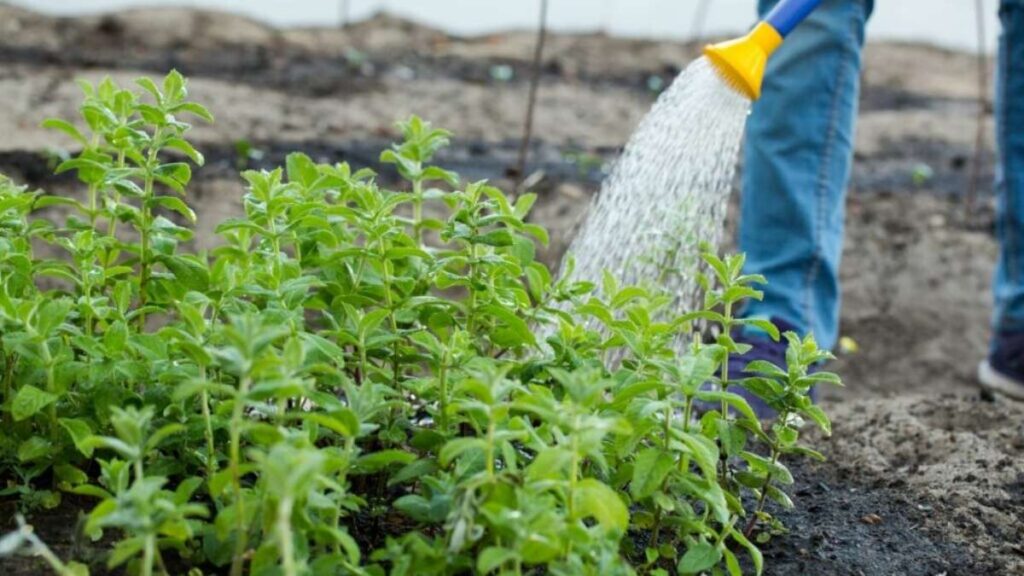
Mint loves moisture, and keeping the soil evenly damp is key to its lush growth. However, overwatering can lead to fungal diseases, so balance is important. Follow these watering tips:
- Water whenever the top inch of soil feels dry to the touch.
- During hot weather, you may need to water daily.
- In cooler months, water every 2–3 days.
- Avoid waterlogging by ensuring proper drainage.
Feeding your mint helps it stay green and full of flavor. Every two weeks during the growing season, feed with:
- Diluted liquid fertilizer (half the recommended strength)
- Or compost tea made from organic compost soaked in water
Avoid over-fertilizing, as it can make the leaves lose their strong aroma.
Pruning and Harvesting
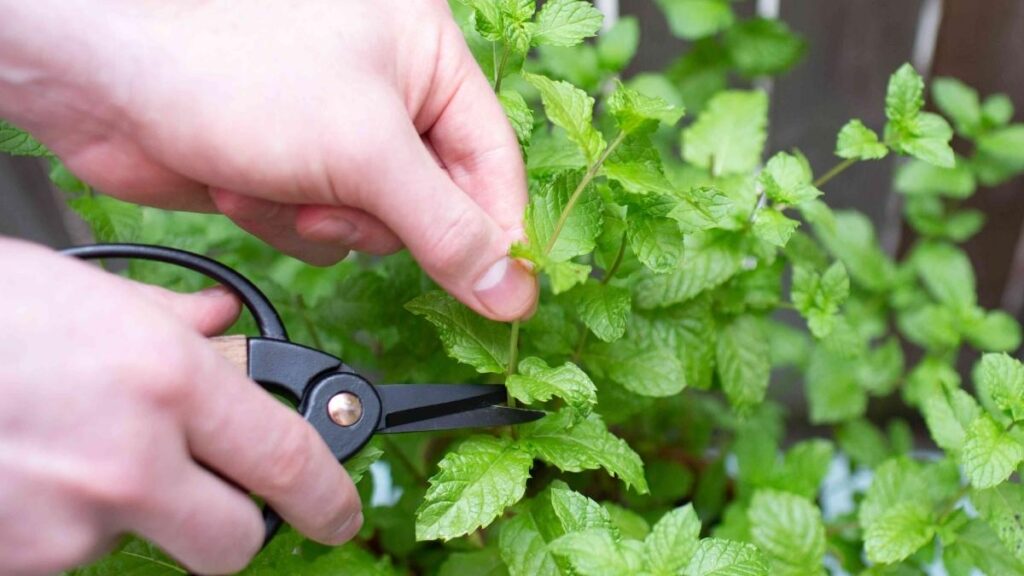
Regular pruning is the secret to a bushy and long-lasting mint plant. Without trimming, the plant can become tall, thin, and woody at the base. Here’s how to manage it:
- Pinch off the tips of stems regularly to encourage branching.
- Begin harvesting once the plant reaches 6 inches tall.
- Always harvest from the top, leaving lower leaves to keep the plant healthy.
- Never cut more than one-third of the plant at once.
- The best time to harvest is early morning, when essential oils are most concentrated.
Pruning not only gives you a fresh supply of leaves but also keeps the plant in shape and prevents it from flowering too soon, which can reduce leaf flavor.
Managing Pests and Common Problems
Mint is generally pest-resistant, but it can occasionally attract insects or develop fungal issues. To keep your mint healthy:
- Watch out for aphids, spider mites, and whiteflies.
- Use a mild soap solution or neem oil spray once a week as a natural remedy.
- Ensure good air circulation around the plant.
- Avoid overwatering to prevent root rot or fungal problems.
- Remove yellow or damaged leaves to promote new growth.
A clean, well-ventilated environment keeps your mint thriving and free from disease.
Propagating and Renewing Your Mint
Mint plants tend to become woody and less flavorful after a year or two. To keep your kitchen garden full of fresh growth, renew your plants regularly. You can propagate new plants easily:
- Take a few healthy stem cuttings, root them in water, and replant them in fresh soil.
- Alternatively, divide the root ball of an existing plant and pot it into two containers.
- Replace the old soil every 12–18 months to restore nutrients.
Regular propagation ensures a continuous supply of fresh, aromatic mint without needing to buy new plants each season.
Using Fresh Mint from Your Garden
Once your mint plant is flourishing, you can enjoy its freshness in countless ways. Some creative uses include:
- Adding leaves to tea, lemonade, and mocktails for a refreshing twist.
- Mixing into salads, chutneys, and dips for flavor and aroma.
- Using in desserts, smoothies, or sauces to enhance taste.
- Making mint-infused water for detox and hydration.
- Drying or freezing leaves for use in the off-season.
Having mint on hand adds a touch of freshness to your cooking and helps you experiment with healthy, flavorful recipes.
Seasonal Care Tips
Mint grows best during spring and summer but slows down in winter. To maintain it throughout the year:
- In summer, water frequently and keep it shaded during the hottest hours.
- In rainy seasons, ensure excess water drains well to prevent rot.
- In winter, move pots indoors or near sunlight to keep the plant warm.
- Trim dead or dry stems before the next growing season for a fresh start.
With consistent attention, your mint plant will remain lush and productive across all seasons.
Final Thoughts
Growing mint in pots is a wonderful way to bring greenery and freshness into your home. It’s low-maintenance, fast-growing, and perfect for beginners or busy gardeners. All you need is a good pot, quality soil, and regular watering to enjoy endless mint leaves for your teas, dishes, and desserts.
Whether you keep it on your balcony or kitchen windowsill, potted mint adds beauty, fragrance, and flavor to your space. With a little care and regular pruning, your kitchen garden will always have a thriving mint plant ready to elevate every meal you make.
